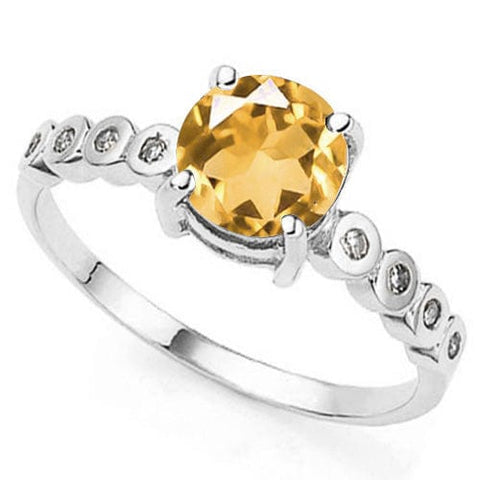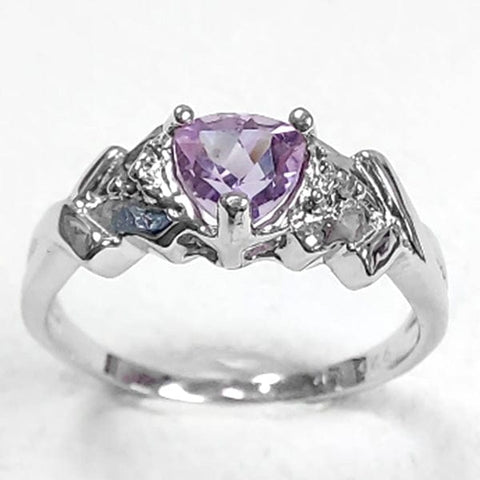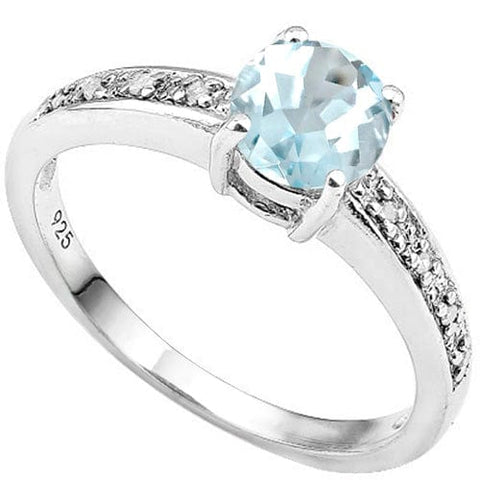Gemstone Jewelry
What Should I Know about Buying Gemstone Jewelry?
Buying a gemstone, whether it be a diamond or an amethyst, can be a stressful purchase because there are so many choices and, with gemstone creation technology, a very wide price range to choose from. Gemstone jewelry is more expensive than other jewelry because you have to pay for the stone itself, as well as the setting on the ring or bracelet or necklace. There is a lot of information and advice surrounding these expensive and important purchases, which can guide you to make the right choice for the occasion and insure that you spend an appropriate amount of the money considering the item that you are purchasing.
Natural Gemstones Versus Laboratory-Created Gemstones
With advances in technology, synthetic gemstones are becoming more and more prolific and popular because of their availability and cost. Gemstones that are created in a lab have a very similar chemical make-up to natural gemstones, but because they are man made they do not have a comparable value. Though the naked and untrained eye, for the most part, cannot tell the difference between a natural and synthetic gemstone, so, if you are on a budget, it may be advantageous to purchase a man-made stone.
Though laboratory-created gemstones are not as valuable or rare as natural gemstones that are considered to be gems. However, an even more inexpensive option is the imitation gemstone. Cubic zirconium is the imitation of a diamond, but it does not have a chemical make-up similar to a diamond because it is made of a man-made product in addition to being man-made. When purchasing a gemstone, it is important to notice how the gem is identified as natural, laboratory-created, or imitation because if it is laboratory-created or an imitation, the jeweler should make that very clear. The price should also reflect how the gemstone was created.
Gemstone Enhancements
Jewelers can enhance gemstones, including natural gemstones that have been mined, to make their colors brighter or give them greater clarity. Enhancements may include heating, bleaching, dyeing, lasering, or oiling among other treatments. While these treatments were carried out to improve the look of the gemstone, it is important to know if the gemstone jewelry that you purchase has been enhanced so that you can care for it properly. Care is especially important for gemstones that have been lacquered on the outside to increase shininess or filled on the inside to reduce cavities or holes on the inside of the gemstone.
Enhancements on a gemstone can change its value, but some artificial treatments improve the look of the gemstone but actually interfere with the natural integrity of it. Removing blemishes in jade with acid, for example, cleans up the look of the stone, but then the stone is filled with wax or polymers wherever the acid eroded too much. In contrast though, some stones are covered with a layer of quartz to harden and protect the gem from hard wear. In any case, you should ask what enhancements have been used on any gemstone jewelry that you are interested in purchasing.
Typically gemstones that have been treated cost less than gemstones that have not been treated because gems with flaws—even if they have been fixed—cost less than gemstones with minimal or no flaws. However, because gem mines are running low on gems, especially those that have fewer flaws, some gems—like rubies and sapphires—are most commonly found in an enhanced form. If a mined gemstone is very rare, it is more likely that you will found it being sold in an enhanced form, due to the outrageous price of a flawless rare gem.
Diamond Grading Reports
An additional “C” has been added to the four “C’s” of buying a diamond, and that fifth “C” is certificate. Each diamond has it’s own grading report that has been filled out by a gemologist using special tools to identify each characteristic of an individual diamond. Like humans, no diamond is alike. Each diamond has its own specific weight and shape, as well as, flaws and defects.
The Gemological Institute of America or the American Gem Society issues a grading report; so many, but not all diamonds come with grading reports. Buying a diamond that has a grading report insures that the diamond is just as perfect as the jeweler says. If knowing about the make-up of your diamond, it is important that you obtain a diamond with a grading report rather than relying solely on what the jeweler tells you. With grading reports, you are also better able to compare the qualities of multiple diamonds. And even though a grading report does not decide the price of a diamond, it will have some influence on how the jeweler prices it for sale.
Gemstone Hardness
If you are interested in customizing your gemstone jewelry, you may purchase a gemstone separately form the actual piece of jewelry that you intend to wear. So when you are picking out a loose gemstone, you should consider the hardness of the stone before deciding to wear it as a ring, for example. Some stones are harder than others—diamonds being at the very height of hardness—so it is important to choose a harder stone to wear on a ring or bracelet because it will brush up against hard surfaces and be more vulnerable to wear and tear. If you are picking out a gem for a daily wear bracelet or necklace, the hardness of the gem is especially important; if you decide to pick a softer stone, the jewelry should be worn only for special occasions, so as not to quickly decrease the lifespan of the stone.
The good news, however, is that any stone—hard or soft—can be worn on necklaces, earrings, or brooches because they those pieces are much less likely to come in contact with harsh situations.
Gemstone Shapes
There are eight standardized gemstone cuts that jewelers use to shape stones into the sellable beauties that you see in stores on gemstone jewelry. For the most part, these cuts are made to add as much sparkle to a gemstone as possible. The shape of a gemstone will also affect how it reflects and refracts light, which makes it even more radiant, but also gives each shape it’s special elements of light reflection and sparkle.
The round brilliant cut is the most popular cut because it offers the most opportunity for sparkle. Though, if done wrong, the stone will look dull because it will not reflect light, but let it spill through the gem. The round brilliant cut is also popular because it retains much of the weight of the gemstone, without cutting away too much in search of more sparkle. Of course, cuts and carats are two of the four “C’s” in diamond buying, so jewelers must walk a fine line when cutting diamonds and other rare gems. The oval cut is similar to the round brilliant, but if done well can have a bow-tie effect that allows light in, but does not reflect it out making the gem look inherently bright.
Other cuts include the marquise and the pear, which also have a bow-tie effect. The heart cut is used for it’s emotional value, but also so that a jeweler can cut out an inclusion between the two lobes of the heart. The rectangular cuts are emerald and baguette, these cuts are used often to cut out flaws in the gem, but have stunning results. The very popular princess cut has four 90-degree angles, which when put next to each other on a band can give the impression of endless sparkle.




